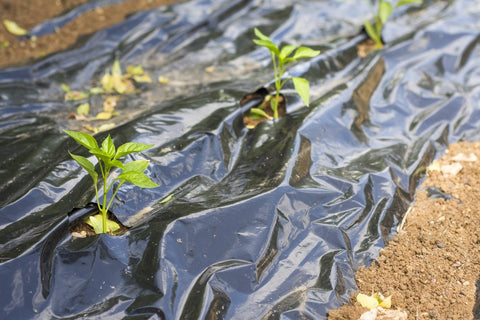No Products in the Cart

In a world that’s moving to a more eco-friendly consumption, the terms biodegradable and compostable have become common and popular words. In practice, these two words are used interchangeably by consumers and some manufacturers alike. However, interchanging the terms is an incorrect and misleading characterisation of what either word stands for.
Unfortunately, some manufacturers use an incorrect term on their packaging material in their "green-washing" efforts. Consumers need to learn about the differences between the two terms to make informed decisions when purchasing products that benefit the planet. Is one better than the other? What are the pros and cons of biodegradable and compostable packaging and materials?
As we move into the future, these terms will become a ubiquitous part of our shopping experience. We should strive to understand the terms and their application.
The American Society for Testing and Materials defines biodegradables as any material or substance that degrades its constituent components owing to the action of naturally occurring organisms and microorganisms such as algae, fungi, and bacteria.
With regards to plastics, the Australian Bioplastics Association defines biodegradable plastics as a range of plastics that can break down entirely into natural substances aided by microorganisms. Unlike traditional plastics, this range of plastics is bio-based, meaning they are made using natural raw ingredients such as sugarcane or corn. However, the fact that some plastics break down to their constituent components does not necessarily mean that the biodegradable material is entirely planet-friendly.
For instance, some plastics break down to micro-plastics while others release greenhouse gases during the breakdown process, both of which can adversely impact the environment.
There are two main types of biodegradable materials: hydro-biodegradable and oxo-biodegradable. While both biodegradables will undergo chemical degradation, the difference is the specific cause of degradation. For oxo-biodegradation, chemical degradation is caused by oxidation, while in hydro-biodegradation, degradation is caused by hydrolysis.
1. Reduces wastes sent to the landfills
2. Releases fewer harmful substances as they break down
3. Consumes less energy during the production process
4. Easy to recycle – does not require specific conditions in temperature, moisture, and time to degrade
5. Consumes fewer petroleum products during production
Many products are biodegradable. They include:

Compostable materials or products can break down into constituent elements in a compostable environment. Unlike biodegradable products and materials that can degrade naturally, compostable materials require a set balance of temperature, humidity, and other factors to occur efficiently. As such, composting requires human intervention to occur. Composting is accelerated degradation under human control to yield carbon dioxide, water, and inorganic compounds without leaving toxic residue.
There are three types of compostable: aerobic, anaerobic, and vermicomposting. With aerobic composting, you introduce air to help aerobic bacteria to thrive and break down the compost. As such, you need to tumble the compost every few days. On the other hand, anaerobic composting does not require oxygen. However, it produces an awful odour and methane, a greenhouse gas. Finally, vermicomposting utilises worms, oxygen, and moisture to break down the organic matter.
1. Do not leave behind any toxic residue, as is sometimes the case with biodegradation
2. The resulting humus adds nutrients to the soil, reducing the need for chemical fertilisers
3. Composting encourages the production of beneficial fungi and bacteria
4. Compost helps the soil retain more water
5. Composting helps to suppress plant diseases and pests.
At Goods that Give, we care about mother earth and everything within it. We’ve sourced and stocked a wide variety of goods that are not only good quality items but plant-friendly. We understand that discerning the differences between biodegradable and compostable can be daunting for every consumer to understand. As such, we've made it easy for you. We only sell products that do not harm the environment. You don't have to guess yourself with our products second. Rest assured our products are environmentally-friendly.